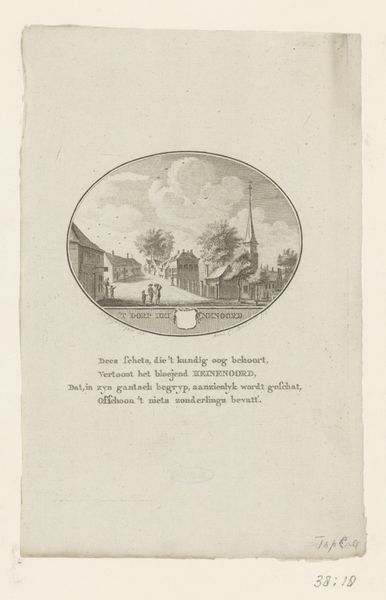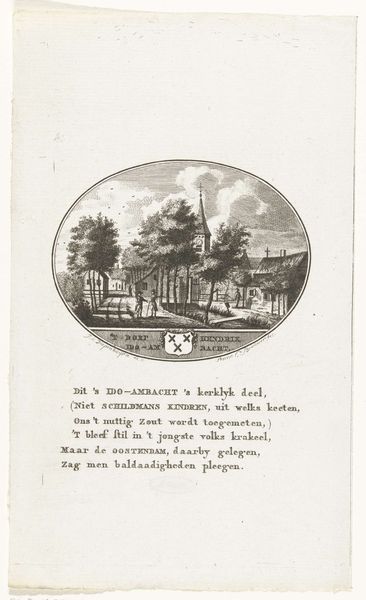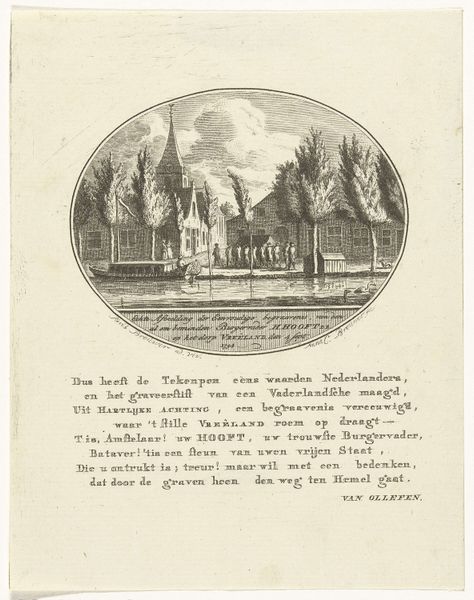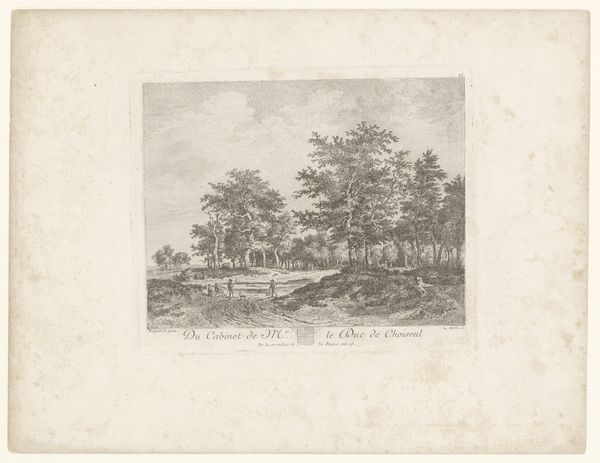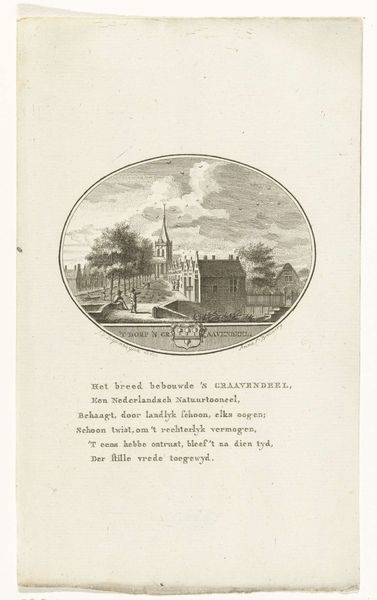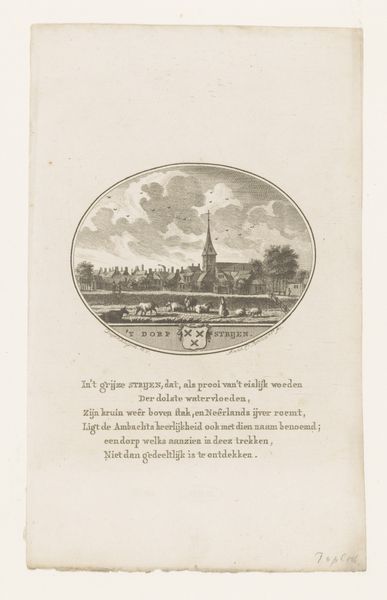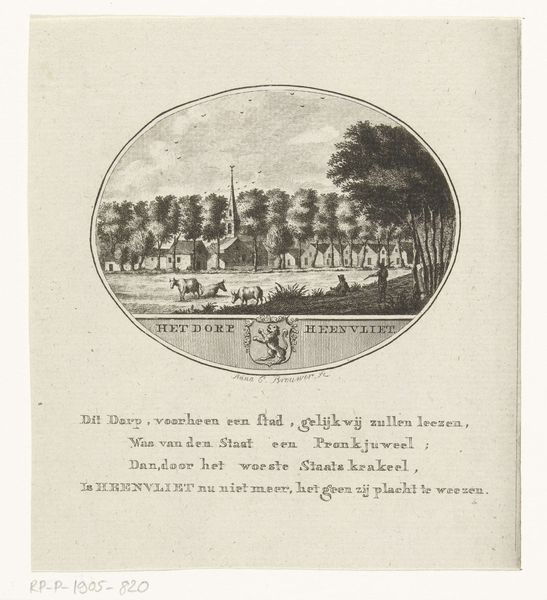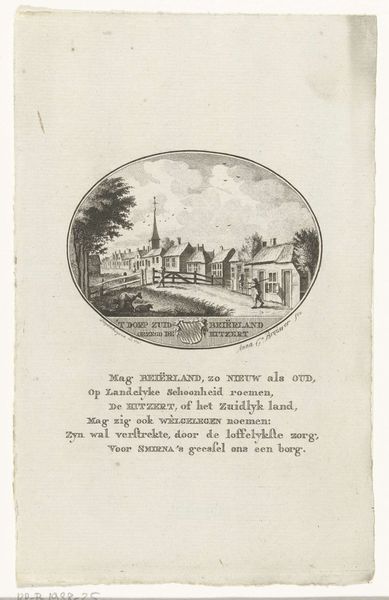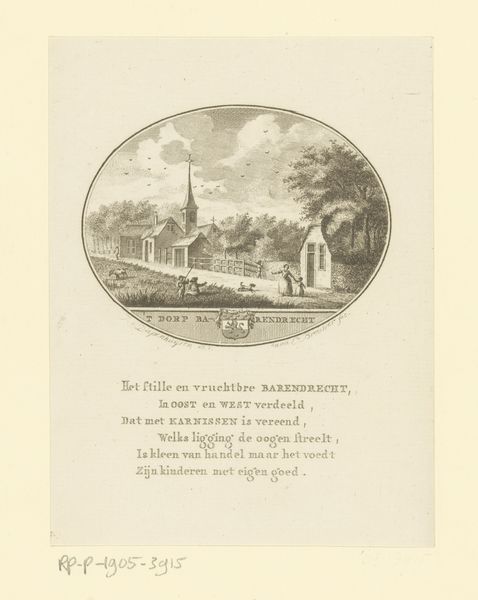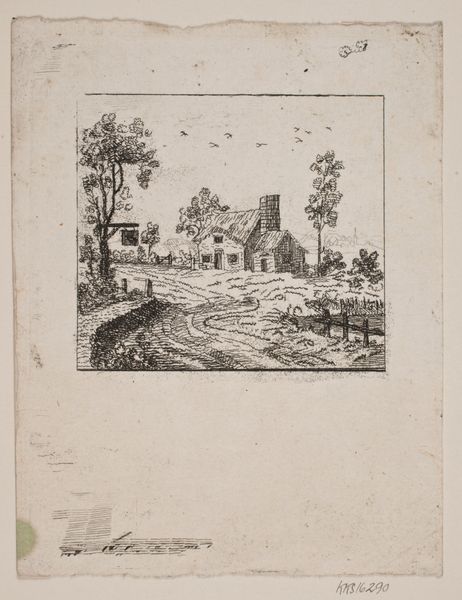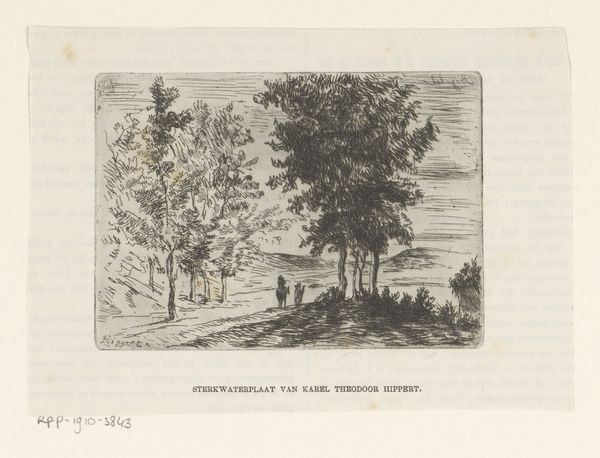
print, engraving
#
dutch-golden-age
# print
#
landscape
#
cityscape
#
engraving
Dimensions: height 220 mm, width 145 mm
Copyright: Rijks Museum: Open Domain
Curator: Here we have Anna Catharina Brouwer’s “Gezicht op het dorp Dubbeldam,” an engraving from 1793 housed here at the Rijksmuseum. Editor: It has a wonderfully quaint, almost idealized feel, despite being in monochrome. The symmetry is striking. Curator: Yes, it's an intriguing piece, isn’t it? The Dutch Golden Age aesthetic applied here really emphasizes the relationship between the print medium and its broader socio-political function at the time. The rising merchant class valued depictions of towns and landscapes, bolstering their sense of civic pride. Editor: And it’s clear that the choice of engraving—a repeatable, easily distributed medium—is integral. This image was meant to circulate, to be consumed by a wider public than, say, an unique oil painting might. What do we know about the process of this particular engraving, what are the specific techniques or methods that Brouwer employed to realize this scene? Curator: Sadly, very little primary source documentation from Brouwer’s hand remains, so direct analysis is mostly speculation. We can observe a skilled artisan demonstrating precision, effectively using cross-hatching to capture tonal variations which give life to both the natural elements of trees and land, along with subtle suggestion of building form through strategic shadowing and spatial cues. Editor: Exactly, we also observe this print circulated among collectors, contributing towards establishing what was important in the period’s art production by conferring it significance within a larger framework centered around commerce; this allowed for new forms of expression reflecting changing societal tastes which moved from courtly patronage-supported pieces toward independently created objets d'art distributed for sale by trade-connected printers throughout their respective social tiers! Curator: A brilliant observation. The way this image served the public then differs radically in many respects now that this piece of the Golden Age is inside the Rijksmuseum and open to visitors on any day! Editor: Indeed, that very point drives home just how institutions transform art objects while still offering insight through images created as product by hands rather similarly situated workers just few centuries previously--quite thought engaging truly it appears to reveal even within smallest printed town views!
Comments
No comments
Be the first to comment and join the conversation on the ultimate creative platform.
